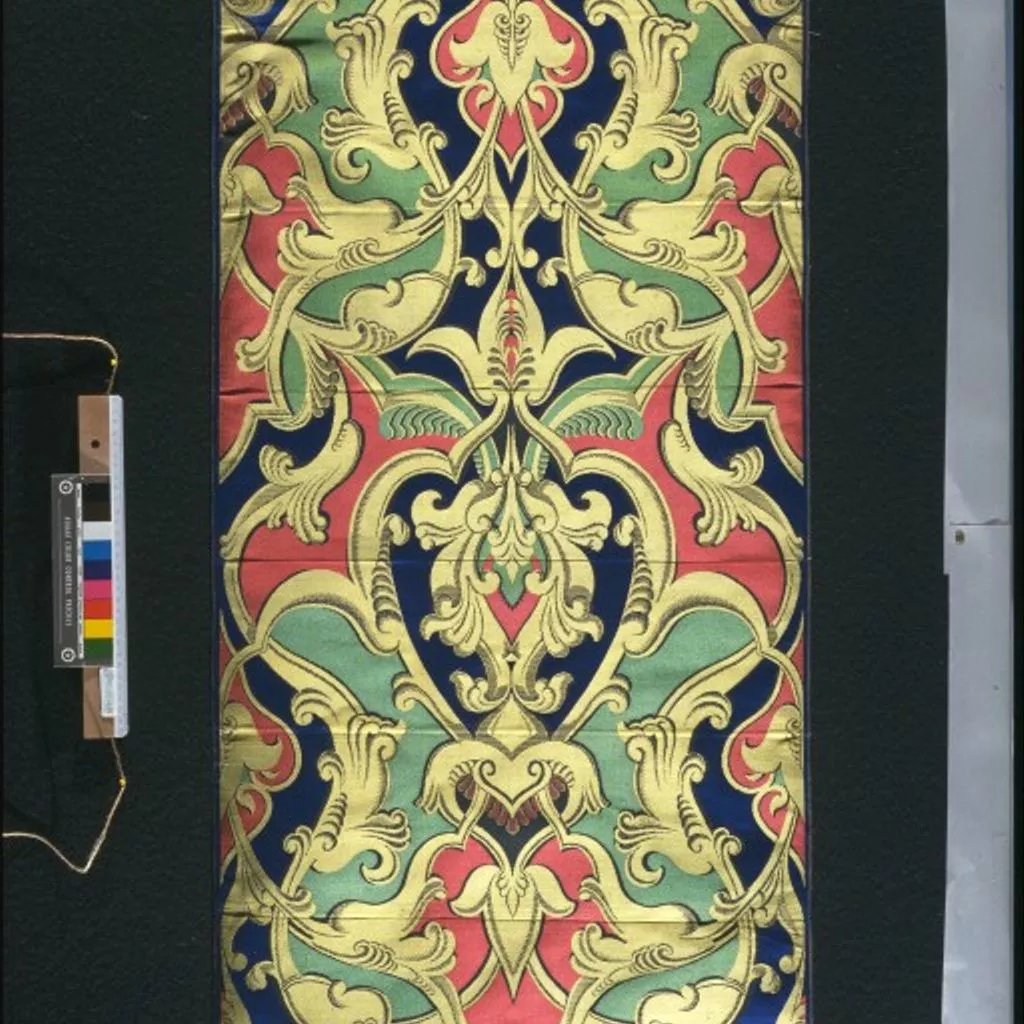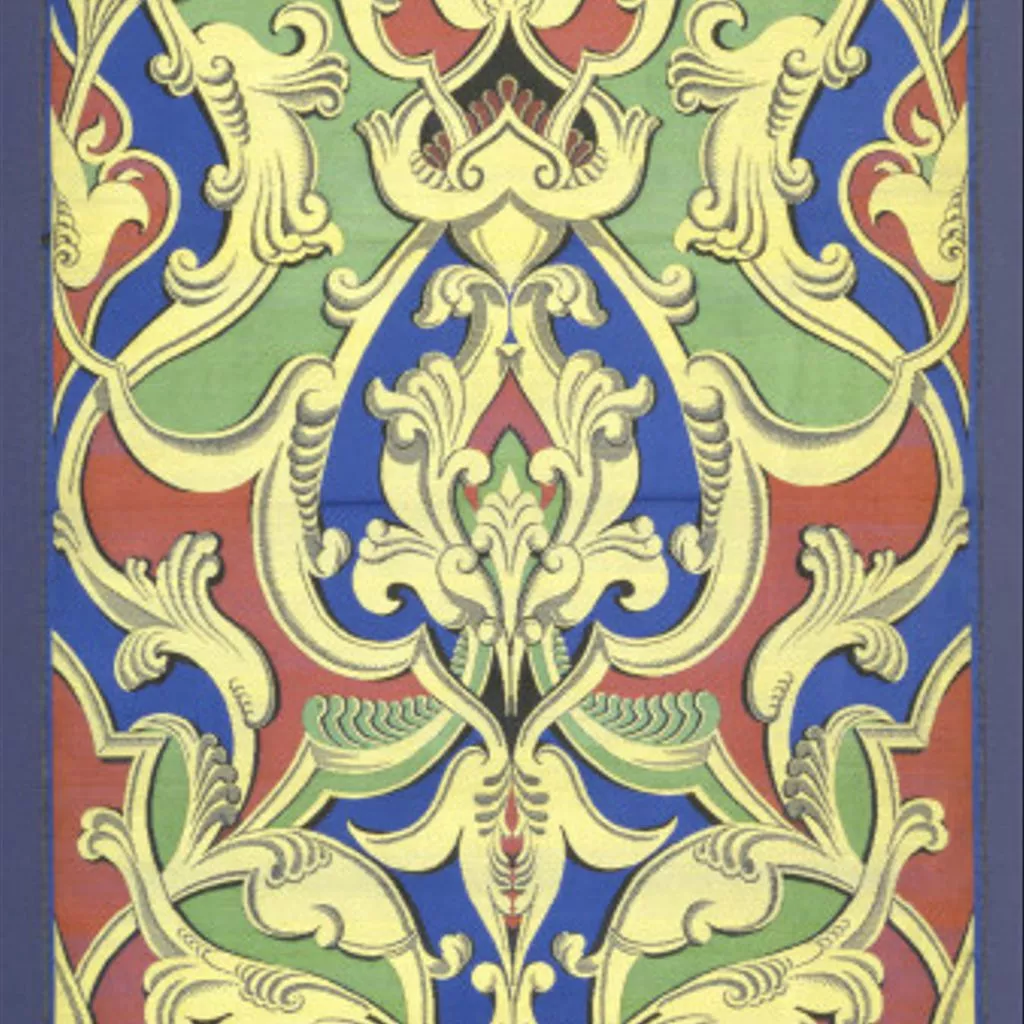1855, England
1855, England
- Identifier
- T.132-1972
- Acquisition
- Given by Warner & Sons Ltd.
- Carried out by
- Jones, Owen (http://data.silknow.org/activity/designer)
- Collection
- Technique
- Damask 49%

- Velvet 58%
- Embroidery 99%
- Embroidery 92%
- Embroidery 99%
- Embroidery 52%

- Embroidery 95%
- Damask 49%
- Depiction
- Floral motif 77%

- Floral motif 58%

- Floral motif 81%

- Floral motif 77%
- Dimension
- 127 cm (height)127 cm (height)54.2 cm (width)55.5625 cm (width)55.6 cm (width)54.102 cm (width)
- Production time
- Production place
- Type of object
Description
This woven silk furnishing would have been used for curtains or upholstery. The designer of this textile is unknown, although the pattern was strongly inspired by the publications of the architect and designer Owen Jones (1809-1874).
Materials & Making
Given to the Museum by the silk weavers Warner & Sons, the silk may have been woven by the firm of Daniel Keith & Co., whose records Warners acquired in 1894. Keiths manufactured high quality furnishing silks and traded from 124 Wood Street, Cheapside, London. Well known throughout the 19th century, the firm exhibited a range of woven tissues, brocades, brocatelles (sumptuous, rigid, ribbed fabrics suitable for battening to walls) and silk damasks at the Great Exhibition of 1851 in London.
Design & Designing
The pattern of this silk shows the popularity of Islamic decoration in Britain in the 19th century. The name of the pattern is 'Alhambresque'. The design is not based on decoration from the Alhambra Palace, Granada, Spain, but on that in the late 15th-century 'New Mosque' in Istanbul. In March 1836 Owen Jones published a series of prints on the decoration of the Alhambra Palace. This was based on drawings he and the French archaeologist and architect Jules Goury (1803-1834) had made in Spain. These studies were published in two volumes in 1842 and 1845 called Plans, Elevations, Sections and Details of the Alhambra. This silk design is not represented in this publication, but its colouring is influenced by these illustrations and those of Owen Jones's later book The Grammar of Ornament. Figure 21 in section 'Turkish No. 1' (plate XXXVI) shows the basic structure of this pattern, described by Jones as characteristically Turkish.





